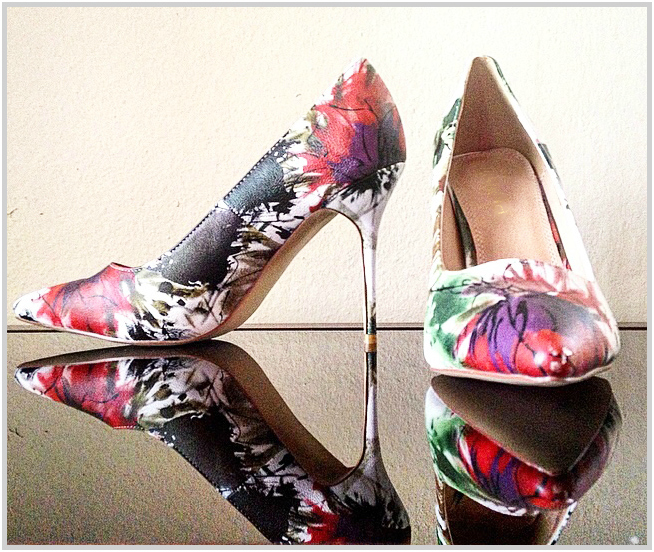May 2015
Heels and Your Posture
by Nick A. Titley, M.S., NPI-Certified Posture Specialist
Heels or High-Heels were made to compliment your personal style. So, damaging your body and endangering your posture is probably the last thing you think about when slipping on your favorite pair. How are those fashionable heels causing you harm? Keep reading, you’ll learn how heels are affecting your posture and we’ll offer some solutions you can implement today.
 The right heels add style to any outfit, but unfortunately those heels could be detracting from your comfort and postural alignment. Still, many women continue to use them regardless of the way they feel because foot fashion is considered a sacrifice that’s well worth it. The consistent wearing of high heels has come under fire for the negative effects they bear on feet and postural alignment, but are they really that bad and just how are they affecting your posture? The right heels add style to any outfit, but unfortunately those heels could be detracting from your comfort and postural alignment. Still, many women continue to use them regardless of the way they feel because foot fashion is considered a sacrifice that’s well worth it. The consistent wearing of high heels has come under fire for the negative effects they bear on feet and postural alignment, but are they really that bad and just how are they affecting your posture?
The Spine Health Institute (SHI) website says that 72 percent of women wear heels at some point. Women between the ages of 18-49 wear heels the most and 77 percent of women wear them for special occasions. Women also wear them to work, parties and dinners, and when going dancing. SHI explains how towering shoes can take a toll on the spine, hips, knees, ankles and feet while altering your posture and gait. Your body will try to compensate for the off-kilter balance the heels are causing by flexing or forward bending your hips and spine in order to maintain balance.
The forward bending of the spine and hips causes misalignment of the spine and places excessive pressure on the knees; your calves, hips and back muscles also become tense. Excess muscle fatigue and strain accumulated from wearing heels often can also cause the calf muscles to cramp and bulge. Apart from throwing off the natural S-curve of the spine, SHI warns of anatomical changes and foraminal stenosis, a spinal nerve condition that results in shooting pain, numbness, tingling, muscle weakness, spasms, cramping and pain that radiates through the buttocks and down the leg.
High heels place more pressure on the forefoot and your body must adapt to maintain its balance. A heel’s height determines the weight carried by the foot. Higher heels mean more pressure on the forefoot (ball of the foot); 2 inch heels and 3 inch heels place 57 percent and 76 percent more pressure on the ball of the foot.
The problem with heels can start as early as adolescence. Silva, de Siqueira & da Silva conducted a study on the effects of high-heels in adolescents and found that frequent use of high-heel shoes lead to modifications of gravity center and body balance which leads to changes in alignment of the body segments. It’s important that teens reduce the use of high heels because during this phase of their life motor development can be adversely affected. Good posture, especially during these years, must be maintained for the physiological growth and development of the musculoskeletal system.
Silva, de Siqueira & da Silva believe that the height and width of the heels exert the most influence on postural changes and body imbalance. Forward head posture, lumbar hyperlordosis, pelvic anteversion and knee valgus could be the results of excessive high-heeled shoes in adolescents.
This information can feel overwhelming, especially if you’ve been wearing heels all your life and feel hard-pressed to give them up. The American Osteopathic Association (AOA) website explains that you don’t have to give up high-heels, but you do need to choose sensibly. Choose lower heels with wider bases. Heels that are an inch and a half or less are best. Wider, thicker heels will also spread the load placed on your foot more evenly. Stiletto-type heels provide poor support and three inches or higher can shorten your Achilles tendons.
The AOA suggests that you make sure your shoes are the right size; wear soft insoles and alternate shoe choices throughout the day, and from one day to the other. Shoes should have a wide toe box to allow wiggle room. They also suggest wearing heels on days where you won’t need to walk or stand so often. Lastly, take time daily to stretch your calf muscles and feet. Try standing on the edge of a step and allow your heels to gently sink below it. You can also place a pencil on the floor and use your toes to try to pick it up.
High-heels, while fashionable and chic, can cause serious body alterations and postural deviations. From tight and strained muscles to more serious issues involving pain, wearing your heels may not be worth the trouble. However, by stretching, choosing the right size and being aware of when you need to wear them you can save yourself from trouble.
References:
- "The Real Harm in High Heels." The Real Harm in High Heels. American Osteopathic Association. Web. 12 May 2015. osteopathic.org/osteopathic-health/about-your-health/health-conditions-library/womens-health/Pages/high-heels.aspx
- "How High Heels Affect Your Body." Spine Health Institute. Spine Health Institute Center Altamonte. Web. 12 May 2015.
- Silva, Anniele Martins, Gisela Rocha De Siqueira, and Giselia Alves P. Da Silva. "Implications of High-heeled Shoes on Body Posture of Adolescents." Revista Paulista De Pediatria 31.2 (2013). Print.
|